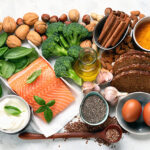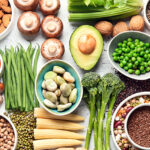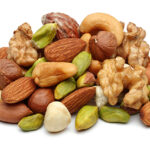Feedback—Your FAQs Answered
What’s the GI of …
Sesame seeds and flaxseeds?
Sesame seeds and flaxseeds contain a large amount of oil and very little carbohydrate so the GI isn’t relevant. Remember that the GI is a measure of carbohydrate quality.
Evaporated natural sugar cane juice?
Evaporated sugar cane juice hasn’t been tested. We would imagine its GI would be similar to that of table sugar (around 60). We believe that a healthy diet can include around 40 grams of added sugar a day. Just keep in mind that the 40 grams we are talking about here includes all the added sugar (added by you or the food manufacturer) you are eating that day. For more information check our story in February 2007 GI News.
Raw coconut?
Coconut is high in fat not carbohydrate too, so again the GI doesn’t apply. The fat is saturated so it’s important to watch how much you consume.
![[COCONUT]](https://glycemicindex.com/blog/2007/sept2007/coconut250.jpg)
I have been putting raw rolled oats and raw walnuts into my breakfast smoothie, thinking I was getting the full benefits of the low GI, but I wonder if I am losing the benefit of oatmeal by grinding it up with the blender.
The amount of grinding that occurs in a blender is not enough to make a significant impact on the GI. Flours, on the other hand, are highly refined thanks to factory steel milling.
![[BLENDER]](https://glycemicindex.com/blog/2007/sept2007/blender250.jpg)
Do you happen to have a list of 100 basic foods/whole foods ranked top down from 100 to 1 (or whatever is reasonably lowest) that I could briefly scan before I am about to prepare and/or eat something?
Well not a list ranked from 100 down to 1. However, there is a book called Low GI Eating Made Easy (Brand-Miller, Foster-Powell and Sandall) which includes the top 100 low GI foods. It’s essentially written for people like you who like to prepare their own meals and enjoy whole foods. Check it out in your local library, bookstore or on Amazon. You may also find the Shopper’s Guide to GI Values (Brand-Miller and Foster-Powell) handy. The 2008 edition will be available towards the end of the year.
![[BOOK]](https://glycemicindex.com/blog/2007/sept2007/shoppers250.jpg)







